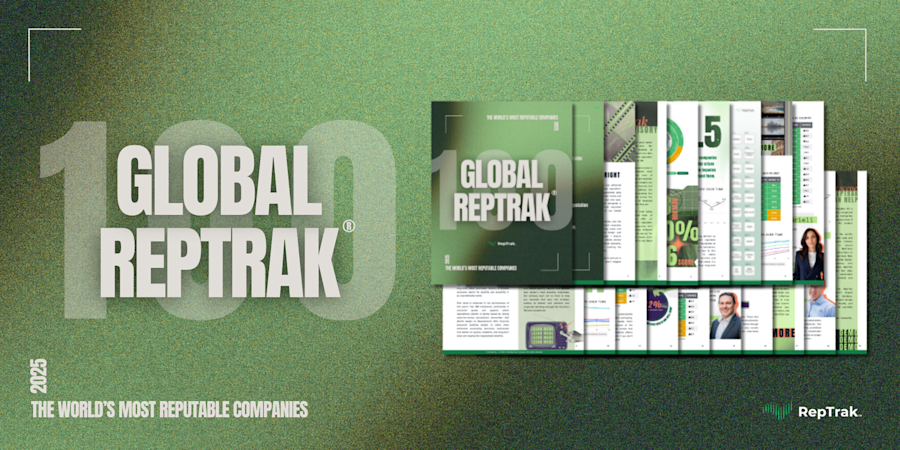How Healthcare CMOs Can Use Purpose as a Competitive Advantage
Blog Post11 Feb, 2020
Corporate purpose defines an organization’s North Star—and underscores what it stands for and how it will make the world a better place. In an economy that’s trending toward what the World Economic Forum calls ”stakeholder capitalism,” purpose can be a powerful differentiator.
In healthcare, however, marketing on purpose can be a bit tricky. Pharma and biotech companies, healthcare providers, health tech developers, and health insurance companies are already committed to improving the lives and health of the stakeholders they serve. That’s why healthcare marketing leaders are smart to go beyond just promoting well-being and dig more deeply into identifying their purpose—and uniquely defining why they exist and more clearly articulating their role in society.
Exploring how your organization delivers on its higher purpose, and providing authentically relevant context behind the pursuit of fulfilling that purpose, creates a unique story that helps you to stand out from competitors vying for the attention of the same stakeholders.
Review the data
In a 2019 survey we conducted with the CMO Club, 58 percent of chief marketing officers said that reputation—as an outcome of how well companies fulfill their business’ purpose—was a key differentiator. That makes it a valuable litmus test for how various stakeholders are likely to buy into your organization.
Intentional marketing enables you to articulate your purpose across multiple touchpoints and incorporate integrated communications channels to reach various stakeholder groups, including:
General and specialty physicians
PAs and nurse practitioners
Patients
B2B customers
Policymakers and regulators
General public
Healthcare influencers
Employees and prospective employees
Investors, shareholders, and board members
Advocacy groups
When you deliver on your promise and your purpose, you drive trust and loyalty, and build a competitive advantage. Data from the Purpose Power Index (PPI), which we conducted last year with StrawberryFrog, illustrates how.
PPI respondents who deeply bought into what an organization stands for and viewed its purpose as excellent were also willing to give it high levels of support:
90% would welcome the company to the neighborhood
88% would say something positive
88% would recommend the company
87% would buy its products
84% would trust the company to do the right thing
81% would give the company the benefit of the doubt
77% would work for the company
Let’s take a look at a couple of ways your healthcare company can use purpose to compete more effectively, and drive deeper levels of engagement.
Create a competitive advantage with patients and customers
A key stakeholder group for most healthcare-related organizations is women. According to the U.S. Department of Labor, women use healthcare more frequently and spend more money on it, due in part to their need for reproductive health services. In 2015, the most recent year available, health expenses for women between the ages of 19 and 44 were more than 80 percent higher than men of the same age. Mothers are an especially important subgroup. They make about 80% of healthcare decisions for their children and are more often the caregivers when a child gets sick. These factors make women an important marketing segment for healthcare services, medical technology solutions, and insurance products. Reaching them requires a more personal approach. Research shows that women put high trust in word-of-mouth recommendations and perceive endorsements from people they know as a highly credible kind of advertising.
Healthcare marketers can capitalize on these data points by creating purpose-focused marketing directed at women and featuring women as decision-makers.
Customer/patient marketing opportunity: Testimonials
First-person accounts are an effective way to convey purpose-related messaging in an authentic way. Showcasing female patients, customers and business leaders tells the story of how you fulfilled your brand promise in a relatable and believable way, and creates an emotional connection to your organization. Highlight how your organization provided care to a patient, how your technology solves an important problem, or why she chose you and why she thinks others in similar situations should seek out your business.
Use video, audio, and editorial testimonials across paid, earned, and owned channels for maximum reach, as well as in employee communications and internal signage/messaging. Examples of deployment include service line webpages, advertising, newsletters, social media, and on-site video displays.
Create a competitive advantage for talent
Two-thirds of chief marketing officers we surveyed for the CMO Club confirm that reputation affects their employer brand, allowing them to attract and retain the best talent. That’s vital in the battle to identify, hire, and keep top performers in a time of labor shortages and utilization increases.
According to the U.S. Bureau of Labor Statistics, there is a growing need for healthcare to treat the rapidly aging population and patients living with chronic conditions. Thus, a big reason why 18 of the 30 fastest-growing occupations are in healthcare—including home health and personal care aides, nurse practitioners, and physician and medical assistants. The agency projects a nursing shortage of 1.1 million by 2022 and a physician gap of 94,700 by 2025.
While insurers and med tech companies don’t face such daunting shortages, they do grapple with stiff competition for top talent. In addition to sweeping changes across all sectors of the healthcare industry, other drivers include the push for innovation, integration, efficiency, and cyber security; changing reimbursement models; increased focus on customer experience and patient outcomes; and an evolving regulatory focus. In this environment, it’s imperative to have the most qualified and motivated people on staff and in the pipeline for future positions.
These factors have fueled a rise in recruitment marketing, which builds on traditional recruitment and retention strategies to include content marketing, social media promotion, email and advertising campaigns, and search optimization. These tactics help you attract candidates who are actively in the market and those who are passively considering a change in position or employer.
When focused on current employees, internal marketing tactics—staff newsletters, intranet postings and on-site signage—strengthen loyalty and pride, potentially reducing turnover and ensuring your organization keeps the best employees so you can continue to deliver on promise and purpose.
Talent marketing opportunity: Social media marketing
Social media is a powerful way to reach potential employees and validate existing ones. Content created specifically for social channels, especially LinkedIn, allows you to integrate purpose-related messaging into your existing activities easily.
Promote high employee satisfaction scores to showcase how staff members enjoy their work, signaling to potential candidates that your organization is worth consideration. Couch patient and customer testimonials in a way that validates your employees’ role in the experience and/or invites prospects to join your team. Develop day-in-the-life videos that feature employees telling their story working for your organization and share on social channels with links to job postings.
Capitalize on purpose
Savvy healthcare marketers are developing new ways of leveraging corporate purpose, including how and why they deliver on it. By creating an organizational narrative that’s built on purpose, activating that across the organization, and embedding it throughout the marketing ecosystem, you can gain a competitive edge on bigger competitors and win patients and the people who care for them.
Stephen Hahn-Griffiths Executive Vice President The RepTrak Company [email protected] @shahngriff





